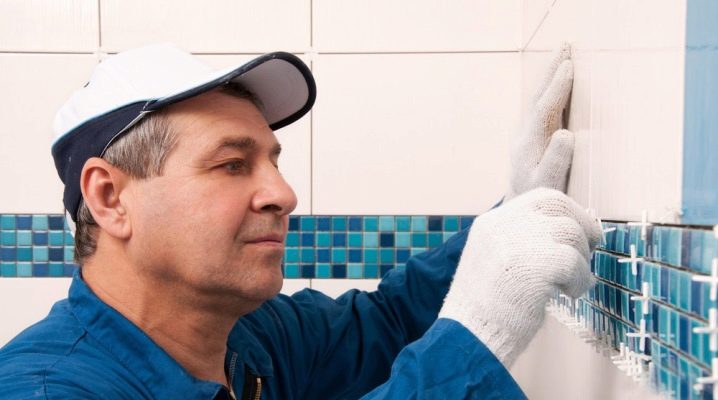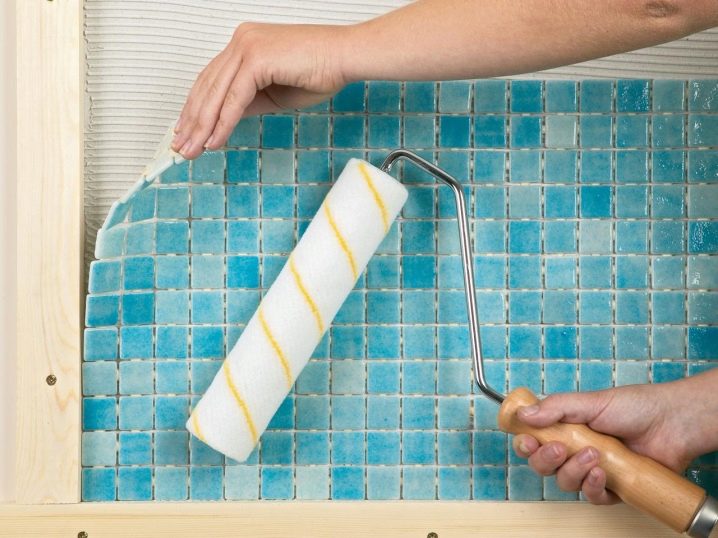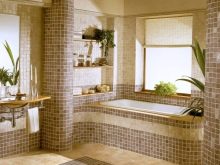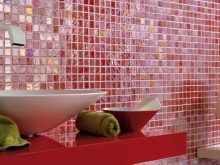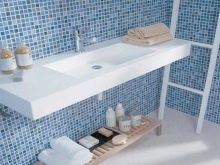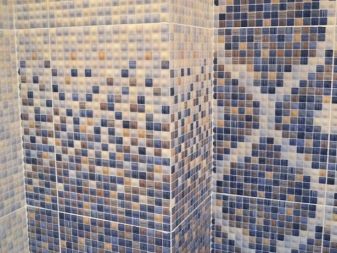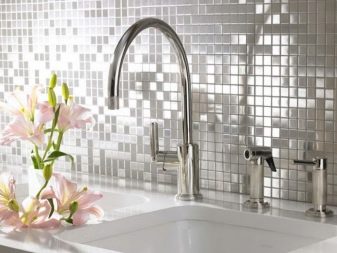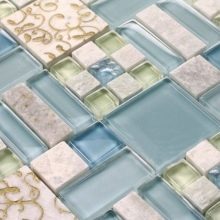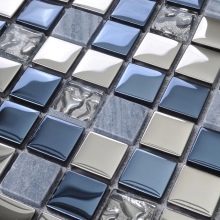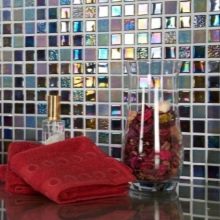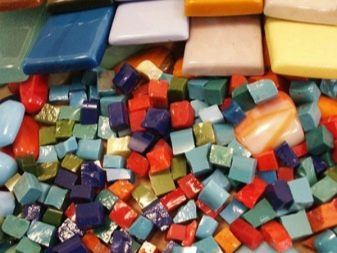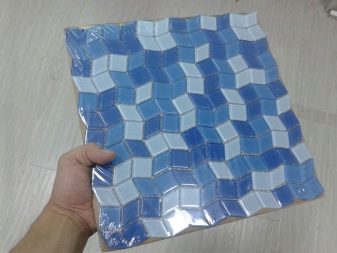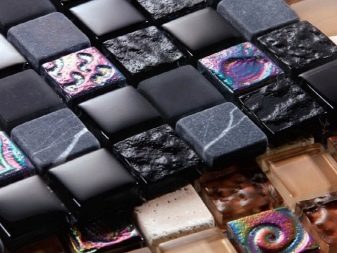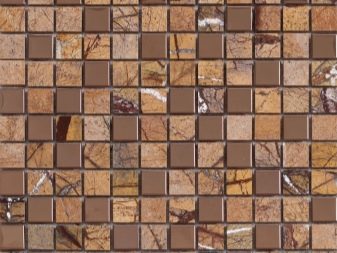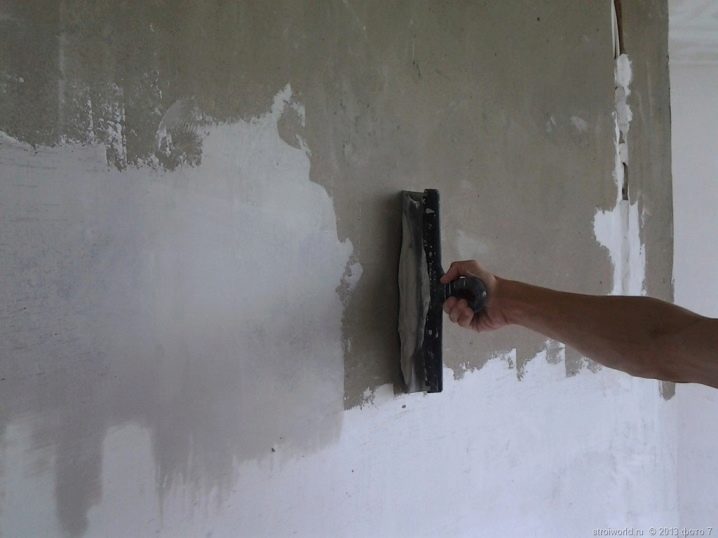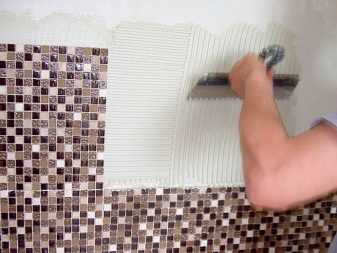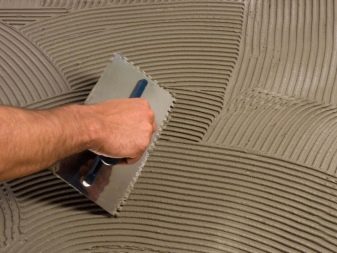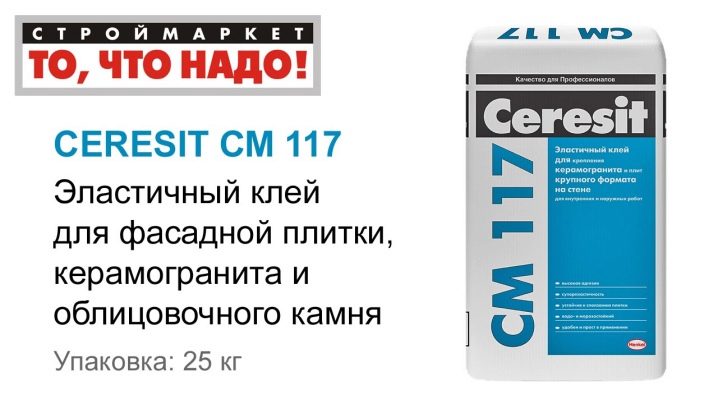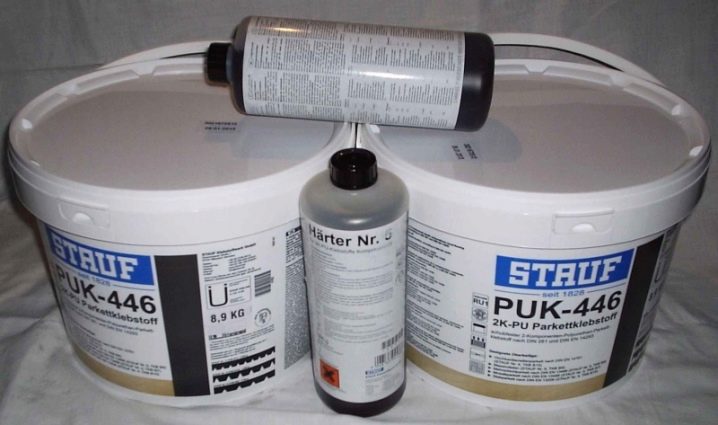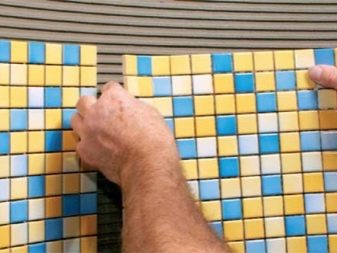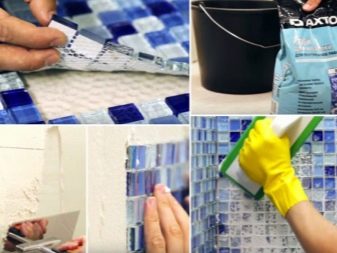Rules for the selection of glue for mosaic tiles
Currently, one of the relevant materials for the design of the kitchen or bathroom is a mosaic tile. The interior becomes more expressive due to the use of small fragments. This design decision is based on the fact that many fragments can visually increase the volume of the room, freeing the owner from unnecessary trouble.
Mosaic
This type of material is a special type of lining consisting of many small elements. Usually the size of one piece varies within a few centimeters.
An important parameter in the compilation of the mosaic is the maintenance of uniformity of the seams. This needs to be done in order for the drawing to appear solid and complete.
The elements themselves achieve fixation in several ways. The most common way is to use paper or a grid. The consequence of this is the elasticity of the material and the large capacity for various deformations and cuts. To change the shape and size of such tiles there is no need to use a special tool, it is very easy to cut at home.
The use of mosaic in modern design has opened up many ways for craftsmen to create unique styles and interiors. Composing unusual panels or solid landscape sketches, they achieved high professionalism in their direction, and also created many options for using the material.
Mosaic materials
Materials for tile mosaic are very different. They can be based on both natural and synthetic components.
Ceramic tile mosaic
Its production is similar to the usual tiles made with baked clay, and its coating is characterized by the presence of a glazed layer. The advantage of this type of tile is the variety of colors and textures.
Another advantage of ceramic mosaic is evident in its strength and durability - it is often used as a floor covering.
Glass mosaic tiles
The dimensions of such a tile are represented by squares with a side from 3 to 6 cm. There are advantages to choosing such a tile. There is also a variety of a variety of unique colors, but a clear feature of glass is chemical resistance, so this tile has almost no fixed life.
Smalt mosaic tiles
Smalty tile can have a different color texture: from full transparency to full haze of the material. In the color performance of the tile, you can see blotches that provide the interior with a special personality. Smalt has an extraordinary depth of color and a great play of colors when interacting with rays of light at different angles of incidence.
The aesthetic feature of the tile is not its only plus, it is also quite durable.
Stone tile mosaic
The surface of such a tile has a matte or polished structure. This material is strong and durable.
Completing of the work
More recently, only professionals were able to put mosaic tiles. The lining process required a master of great effort, accuracy and attentiveness,since it was required to fix the mosaic one element at a time. However, progress does not stand still and in terms of laying material. The development of technology even makes it possible to get rid of the need to call the master to the object, because almost everyone is able to cope with the task of laying the mosaic.
In order to perform this work, a slight skill in repair and accuracy is required.
Base
For better adhesion of the material to the wall, it is recommended to first prepare the surface. Such materials often require a more subtle approach than to ordinary tile. The fact is that the main and most important parameter here is the evenness of the base.
Mosaic is a rather elastic material, so it can reveal any shortcomings of the working surface. Experts recommend to carefully plaster and wipe the place chosen for the mosaic.
The next important step in preparing for the main job will be to ensure cleanliness. Dust, dirt, various kinds of debris, the consequences of grinding - all this can become a problem at the next stage of work. The third and integral stage is the primer.In the case of mosaics, it is advised to use a deep penetration primer in order to increase the level of adhesiveness of the substrate.
Glue
One of the most crucial decisions when working on gluing mosaic is the choice of solution.
There are three types of formulations:
- dispersive;
- cement;
- reactive.
Dispersion type of glue is considered one of the most budget and easy to use. The basis of this solution is only one component. During the work with this structure there is no need for its mixing, dilution with water or any solvents.
This glue can be used literally immediately after purchase.
One of the main positive aspects in working with this type of glue is its ability to be stored without losing its properties.
After depressurization of the packaging and use of part of the composition, you can tightly close the jar, and the substance will retain all its qualities until the next use. In addition, this type of solution does not leave behind any dust or dirt. However, its use is recommended only for a small amount of work.
Cement adhesive is suitable for processing large areas, for example, several walls or other large grounds. This type of glue is made using two types of cement: gray and white.
Its undeniable advantages are manifested in the following parameters:
- elasticity;
- rigidity;
- deformability.
If the mosaic will be glued to a clean, flat surface (a brick base is also suitable for its use), experts recommend using hard-type compounds.
And for a more complex version of the work, when the base may be subjected to heat treatment or various kinds of vibrations, its elastic type is more suitable.
Elastic cement glue variations are also used in apartment repairs. With the help of it, they usually cover with mosaic a kitchen or bathroom. This type of glue is also suitable for work on the basis of aerated concrete blocks or concrete screed.
Cement glue costs are usually cheaper than dispersion glue. However, its operation involves mixing with water or other solvents using a special tool. Often, the construction mixer does not allow to do without subsequent pollution in the form of splashes and stains, so it is difficult to use this glue at home.
One of the most expensive types of solution is reactive glue.
It consists of two components:
- hardener;
- base (epoxy or polyurethane).
This solution is suitable for use on an unusual surface: wood, plastic, natural stone, metal or glass.
The peculiarity of the operation of this type of glue is that it is necessary to mix its components before starting work. After a chemical reaction, the composition almost instantly becomes fully ready for use.
According to the advice of professionals, this type of glue should be used rather quickly. It almost instantly clings to the surface and hardens. A large format tile made of marble or glass mosaic will suit waterproof glue.
For information on how to properly prepare glue for mosaic tiles and how best to apply it, see the following video.
